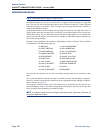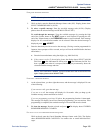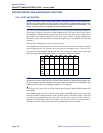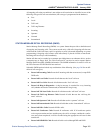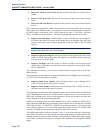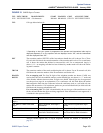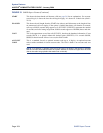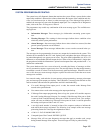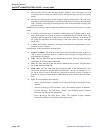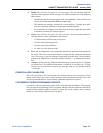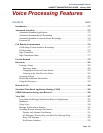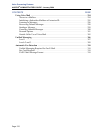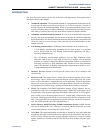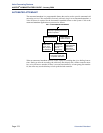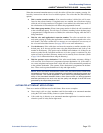
Page 266
System Features
AXXESS
®
ADMINISTRATOR’S GUIDE – January 2004
System Error/Message Printing
• Message Print will not route messages during a startup or reset. The system will wait
one minute before starting to send messages. Startup messages will only be printed
locally.
• Messages may not be printed in time sequence order on remote nodes. The order of an
incoming message print depends on how the message print was routed to the destination
node. Therefore, a message print could possibly arrive at the destination message print
node out of order.
In addition to the messages, the following error indications will occur in the event of a system
alarm:
• If a major system alarm occurs, MAJOR ALARM appears on all display phones. If the
major alarm appears on a group of phones, the associated Keyset Card has failed. The
warning might also appear on a single phone if the phone is defective. If all phones on
the system are inoperative, the alarm message is sent to the system’s primary serial port
on the CPU.
• A minor alarm sends a message to the primary attendant and to administrators, if pro-
grammed to receive alarms.
Each message record includes the following fields:
• Sequence Number: This field shows the order in which the faults occurred. If there is a
skip in a series of sequence numbers, it indicates that a message was logged that is not
programmed to be printed.
• Time: The Time field shows the time that the fault occurred. This field shows the hours
and minutes in 24-hour format as HH:MM.
• Date: The Date field shows the date that the indicated fault occurred. The date shows
the month and date as MM-DD.
• Fault Code: The Code field holds the associated number of the indicated fault. This
field is four characters in length and the first character is an “M” for messages or “A”
for minor alarms. Each of the different system faults that the system is capable of
detecting is assigned a unique number (M100-M999 or A001-A299) in the system data-
base.
• Type: This field indicates the following:
— Alarms: The field shows “ALARM” for system faults that have not stopped system
operation.
— Information Messages: The field shows “INF.” The condition requires no attention.
— Warning Messages: The field shows “WRN.” The condition requires attention
because it may affect system performance.
— Severe Messages: The field shows “SVR.” The condition requires attention
because it has affected or will affect system performance.



